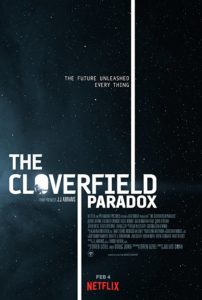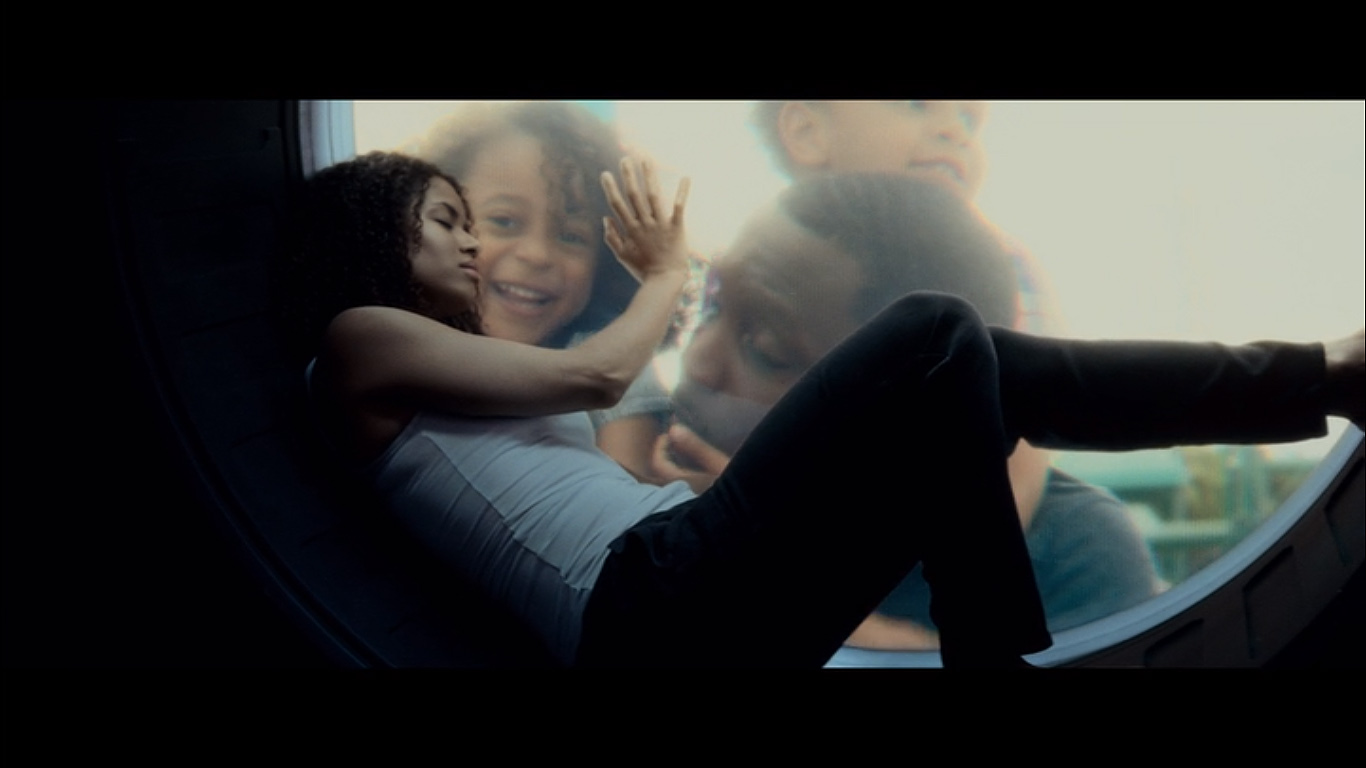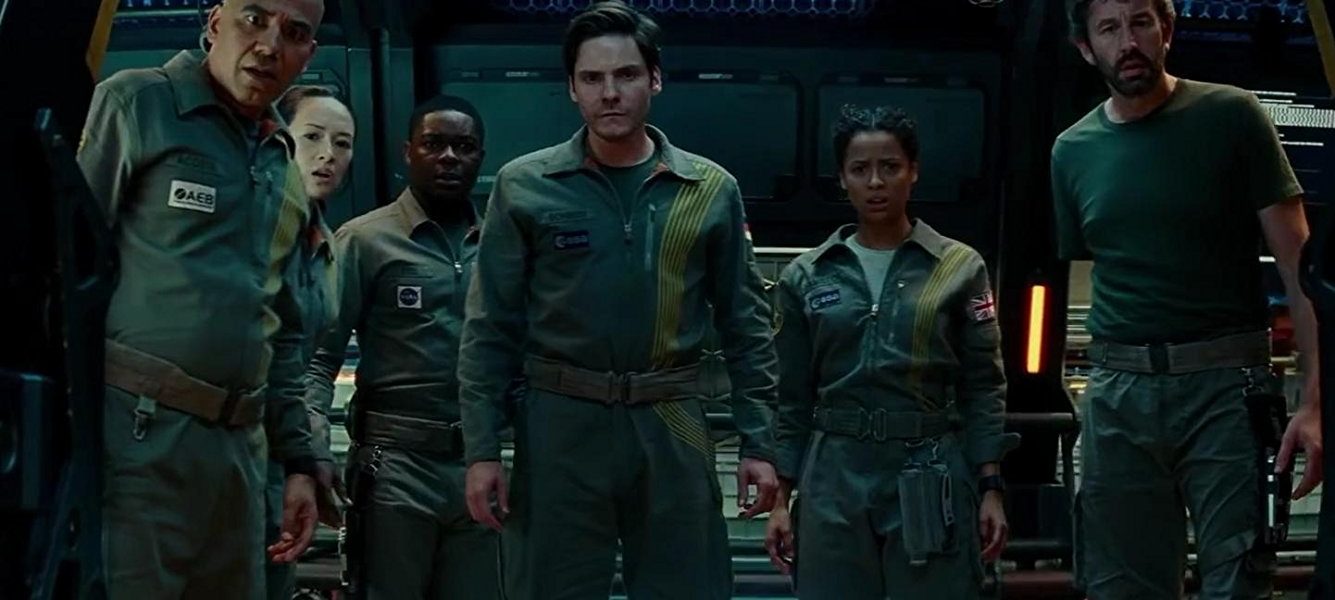J.J. Abrams’s Surprise Sequel Has that Cloverfield Je Ne Sais Quoi
DIRECTOR: JULIUS ONAH/2018

When I wrote about 10 Cloverfield Lane almost two years ago, I marveled at J.J. Abrams pulling off a plot twist in real life. Releasing a surprise sequel with just two months of advertising? How novel!
Now I say, “Oh, Taylor, you sweet, naïve, good-looking movie reviewer, you. You have no idea.” Flash-forward to 2018, and now we’re in a world where J.J. Abrams can produce a movie that drops the same night it’s advertised during the Super Bowl for. the. first. time. My head is still spinning a bit, which is maybe why it’s been months since I’ve felt this excited to write about a movie as The Cloverfield Paradox.
It also helps I have a weakness for the Cloverfield series and that Paradox feels just as much a part of it as the last two films, even though we’ve never met any of these characters before. In this third chapter, an international astronaut team is revving up a space particle something-or-another accelerator (the details of which are hopefully unimportant considering my grasp of it) to create a renewable energy source. Their homelands in China, Germany, Ireland, India, Russia, the U.K., and the U.S. are nearing World War III back on Earth, and this is their last-ditch effort at peace. But their latest test doesn’t bring an eternal fuel—it brings them somewhere…else.
The Cloverfield universe feels anything but finite because the what and the how matter far more than the why or the when.
What makes this a Cloverfield film? Goodness knows it’s not continuing plot threads, as only a few strands connect these astronauts with the partygoers in Cloverfield and the bunker crew of 10 Cloverfield Lane. Is it the confined settings? The characters who die because their guts bust out? The score by Bear McCreary? The blue-green color correcting? The famous people voice cameos? All of those things are true in at least two of the three installments so far (see if you catch Simon Pegg’s voice this time around), but I think the true threads weaving these disparate casts and plots together have a less tangible je ne sais quoi.

Unlike other sci-fi films, the Cloverfield series revels in its weirdness. Paradox shares motifs with genre solids like Alien, Interstellar, and Jurassic Park, but it doesn’t feel as gruesome, operatic, or thrilling as those, even if certain moments do. Like The Twilight Zone, it mines its energy from the mystery itself, making the questions more important than the answers. When the astronauts mention the world’s tense intercontinental relations or Hamilton (Gugu Mbatha-Raw) confesses to stealing power for her family on Earth, we never learn why these things are happening.The Cloverfield universe feels anything but finite because the what and the how matter far more than the why or the when. Advertising Paradox as why the monsters appeared in the first film is the first major answer we’ve been given in three movies, and I hope that doesn’t become a habit—we don’t really need answers.
All I need are the character studies and inventive storytelling Abrams and Co. keep delivering. In Paradox, Mbatha-Raw and David Oyelowo lead a stacked cast. They all play archetypal characters, but they find opportunities to lift them up out of their familiarity. Chris O’Dowd brings the needed humor (and a weird humor at that), Elizabeth Debicki brings the creepy factor, and Mbatha-Raw brings the heartbeat with her on-screen husband, Roger Davies.
 If there are any limitations on their performances, it’s not for want of talent—it’s for want of time. Perhaps the real paradox here is the film’s 102-minute runtime. At least 20 minutes shorter every superhero, sci-fi, and Star Wars movie I saw last year and over an hour shorter than Blade Runner 2049, it’s a ride on an express train to replace your regular commute. But even as the short trip across the Netflix red line feels like a relief, it speeds past a number of missed opportunities. Most character arcs rush from stop to stop, giving us little time to speculate about their motives or futures. The emotional beats land, but they’re predictable, which makes Paradox much less ambitious than the acting tour de force that was 10 Cloverfield Lane.
If there are any limitations on their performances, it’s not for want of talent—it’s for want of time. Perhaps the real paradox here is the film’s 102-minute runtime. At least 20 minutes shorter every superhero, sci-fi, and Star Wars movie I saw last year and over an hour shorter than Blade Runner 2049, it’s a ride on an express train to replace your regular commute. But even as the short trip across the Netflix red line feels like a relief, it speeds past a number of missed opportunities. Most character arcs rush from stop to stop, giving us little time to speculate about their motives or futures. The emotional beats land, but they’re predictable, which makes Paradox much less ambitious than the acting tour de force that was 10 Cloverfield Lane.
But another factor lending to that je ne sais quoi is what characters in all Cloverfield movies have in common besides their weird circumstances. Like Mary Elizabeth Winstead’s Michelle or Michael Stahl David’s Rob Hawkins, these astronauts must choose between courage and fear, between love and the easy way out. They don’t have superhuman abilities or divine appointments as chosen ones, but these characters capture my heart and my imagination because of their ordinariness. Even if The Cloverfield Paradox feels a little derivative, that je ne sais quoi is why I’m already looking forward to the next Cloverfield film, which—if pattern continues—will probably just be announced by interrupting whatever you’re watching on Netflix at the time with the film’s opening credits.


